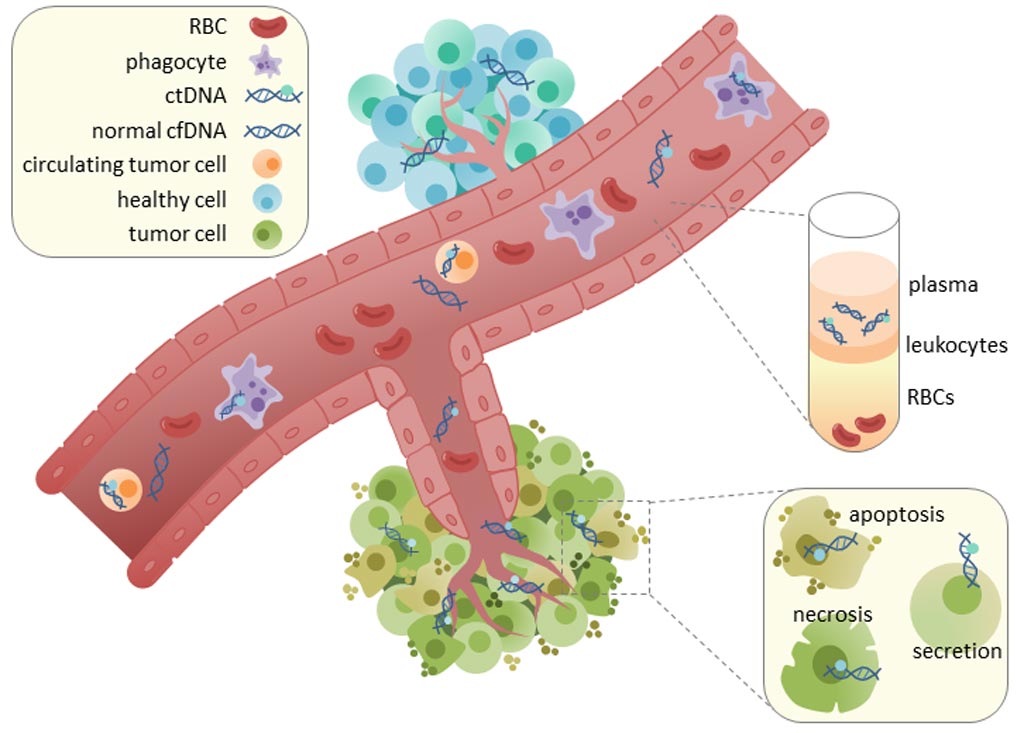Detection of Circulating DNA Predicts Poor Prognosis
By LabMedica International staff writers
Posted on 19 Dec 2017
Analysis of circulating tumor DNA for mutations in the BRAF and NRAS genes was found to accurately predict the likely recurrence of malignant melanoma.Posted on 19 Dec 2017
Patients with high-risk stage II/III resected melanoma commonly develop distant metastases. At present, physicians cannot differentiate between patients whose cancer will recur or those who are cured by surgery.

Image: Circulating tumor DNA (ctDNA) is found in serum and plasma fractions from blood. The mechanism of ctDNA release is unknown, though apoptosis, necrosis, and active secretion from tumor cells have been hypothesized (Photo courtesy of Wikimedia Commons).
To correct this situation, investigators at Cancer Research UK (London, United Kingdom) carried out a study to determine whether having detectable ctDNA within 12 weeks of surgery for high-risk stage II/III disease was associated with worse survival in a subgroup of patients whose tumors were known to have a mutation in either the BRAF or NRAS genes, which have been linked to 70% of melanomas.
For this study, the investigators carried out droplet digital polymerase chain reaction (PCR) to detect BRAF and NRAS mutations in plasma taken after surgery from 161 stage II/III high-risk melanoma patients.
Results revealed that mutant BRAF or NRAS ctDNA could be detected in 15/132 (11%) BRAF mutant patient samples and 4/29 (14%) NRAS mutant patient samples. Patients with detectable ctDNA had a decreased disease-free interval and distant metastasis-free interval compared to those with undetectable ctDNA. Five-year overall survival rate for patients with detectable ctDNA was 33% versus 65% for those with undetectable ctDNA. Overall survival was significantly worse for patients with detectable ctDNA.
Senior author Dr. Richard Marais, director of the Cancer Research UK Manchester Institute, said, "For some patients with advanced melanoma, their cancer will eventually return. We have no accurate tests to predict who these patients will be, so our findings are really encouraging. If we can use this tumor DNA test to accurately predict if cancer is going to come back, then it could help doctors decide which patients could benefit from new immunotherapies. These treatments can then reduce the risk of the cancer spreading. The next step is to run a trial where patients have regular blood tests after their initial treatment has finished in order to test this approach."
The study was published in the November 3, 2017, online edition of the journal Annals of Oncology.
Related Links:
Cancer Research UK













